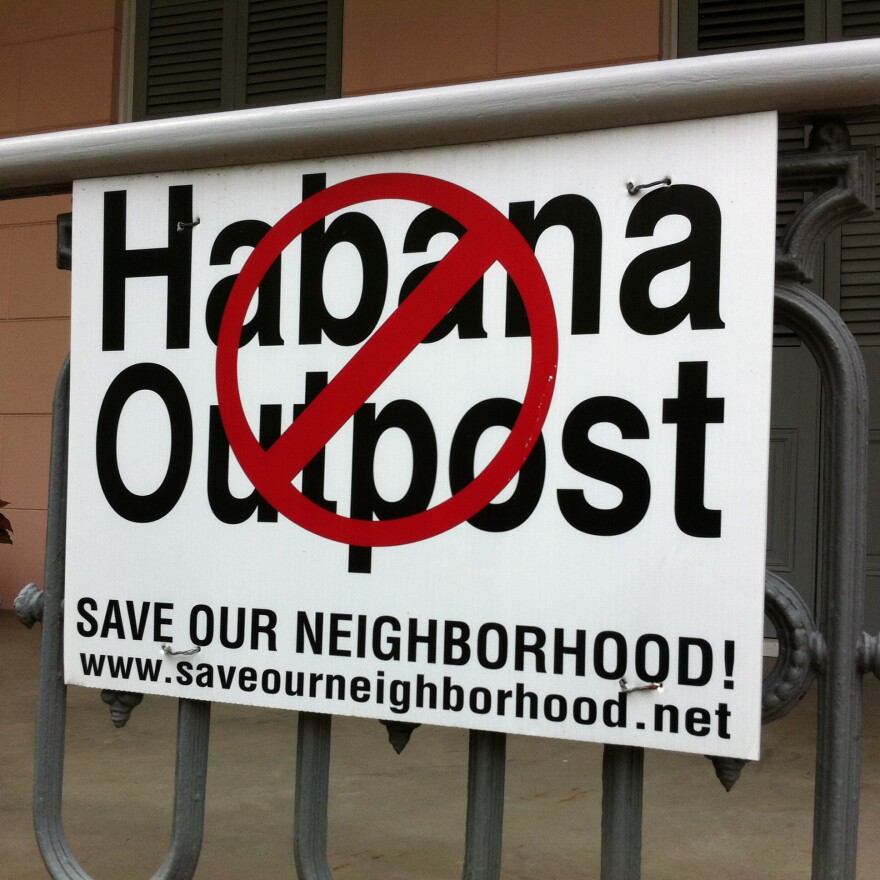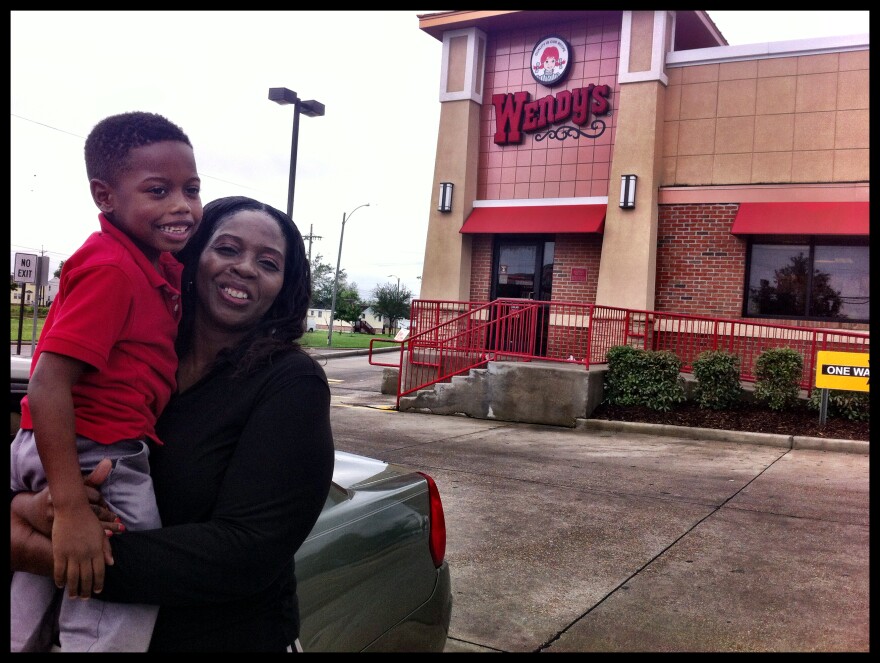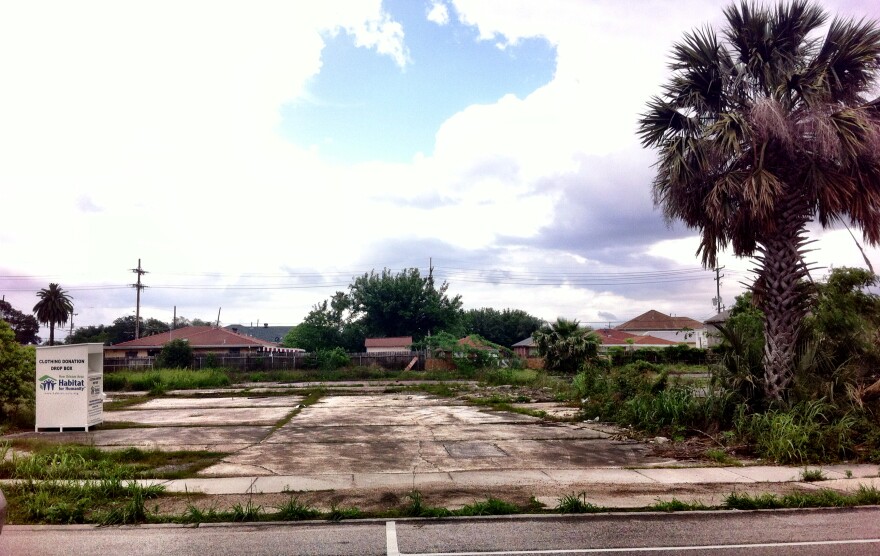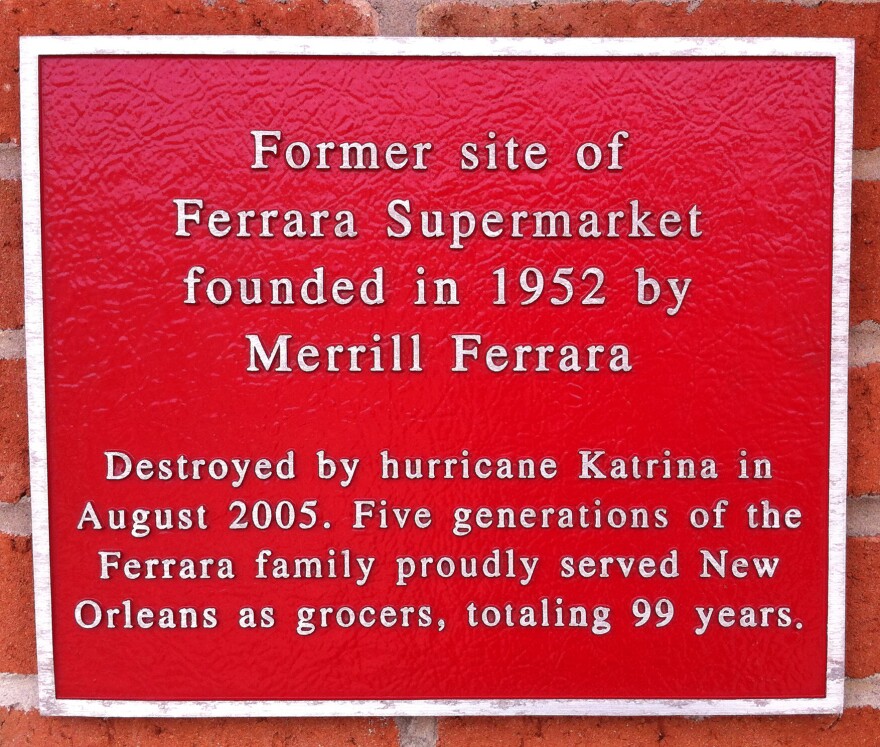WWNO's Listening Post project asks questions about local news in New Orleans and the Gulf Coast and reports back on the community's response. This week the Listening Post examines the role of preservation in New Orleans. How does it work with and against development? Who decides what's worth preserving? And why does it matter?
Last month the city approved plans for the construction of a restaurant called Habana Outpost on the site of an abandoned gas station on the corner of Rampart and Esplanade. For the past three years some residents of the lower French Quarter and Marigny have been trying to halt the project, citing concerns about increased noise, traffic, and alterations to the long-vacant historical structure.
Habana Outpost owner and developer Sean Meenan moved from New York to New Orleans a few years ago. He bought a house on Esplanade Avenue and took notice of the abandoned structure on the corner.

"It had a real Hopperesque vibe to it," he says.
Meenan is an outsider. He has restaurants in New York, Dubai and Malibu. But he came to New Orleans for the same reason a lot of people do.
“I look at the architecture in New Orleans and I get juiced up,” he says.
When he introduced plans to open his restaurant in the old gas station, Meenan thought he'd be celebrated for developing a vacant property. But that was decidedly not the response he got from some residents. Neighborhood groups made anti-Habana Outpost signs and fought the development at every step of the process, maintaining that the restaurant did not fit the character of the neighborhood. Meenan says there were a lot of rumors and misinformation during that time.
"Biker bar, live music, crazy stuff, dancing girls, everybody heard all kinds of things about what was going to happen here. I was going to have capacity of 1,000 people.”
Click below to hear our full interview with Sean Meenan.
Ironically, it's groups like the ones opposing Meenan that attract people like him in the first place.

“Even some of the neighborhood groups that have been against me, I would not be here in the French Quarter if they weren’t here being concerned citizens about the architecture here. It's not just the Vieux Carré Commission, it's other citizens taking time to really be passionate and care a lot about what's going on," Meenan says.
Preservation and development have a complicated relationship, especially here in New Orleans, where so many parts of the city suffer from blight and underpopulation. How do you preserve the historical character of a neighborhood while also making it more functional and accessible to a diverse segment of the population?
As always, we turned to you to get your opinions via text message. We wanted to know what you think should be preserved in your neighborhood.
- What's a business or community landmark in your neighborhood that you hope is around in 10 years?
“There aren’t any landmark business in my community” “Cansecos"“Tipitinas uptown” “City park” “Sacred heart church on canal, Louis Armstrong was baptised there!” “Latter Library” “Harold’s plants because it had encouraged me and my neighbors to grow food and make our porches and yards greener” “Finn mccools” “JuJu Bag Cafe” “the library” “Carrollton Courthouse” “Good egg sign on Broad Street” “The bayou as it’s currently used, Holly Grove, Fortier Park. Vacant property: Morris Jeff school on N. Rendon” “Children’s group home for foster kids” “Too many to list” “Lakefront lighthouse” “Rosa Keller library!” “Casamentos” “Twelve mile limit” “The fly in Audubon park” “There are several businesses that I know for a fact will be in this neighborhood for a long time, like Wendy’s, Popeyes, Capital One, Burger King only to name a few Oh and me of course!!!”
Click here for more of your ideas about how to develop vacant properties in New Orleans.
Click below for a montage of opinions about preservation and development in New Orleans.
We were intrigued by that last comment. So we used our text message platform to get directly in touch and see if that person would tell us more about her neighborhood.

Lisa Stevens has lived in Gentilly for 30 years. She met us in front of that Wendy's she mentions in her text to talk about the history of the Robert E. Lee/Elysian Fields intersection. Her 5-year-old grandson Malik tagged along with her.
“Before Katrina it was a grocery store, before that I think this was a nightclub, long time ago. And then we had the school that, you know, closed down after Katrina, so after that, just basically we don’t have a whole lot going on other than the restaurants. And we have Walgreens," Stevens says.
Directly across Elysian Fields from the Wendy's there's a large abandoned lot. Stevens wants to see a recreation center for kids go up on that site.
"A place where they can come and do homework and a place where they can have fun,” she says. "When he grows up, I mean where would he be? This is what I’m thinking about: him. He’s 5 now. So I would like to see change come to this neighborhood," she says, pointing to Malik.

The way neighborhoods in New Orleans change is the primary concern of the Preservation Resource Center. The PRC aims to preserve the unique look of New Orleans in order to attract residents, tourists, and businesses. It's not just about individual buildings, but the tout ensemble, as PRC executive director Patricia Gay says: the all together, the total effect, the streetscape.
"Our shotgun houses collectively represent a belief in the city, a belief in the neighborhood, a belief in the collective, as well as the individual," Gay says.
Gay says residents have the power to decide whether they want to preserve historic houses or let in the big box stores.
Click below to hear our full interview with Patricia Gay.
"It's for the neighborhood to decide: do you want that or not? But more and more people are saying we don't want it. So let's look into having a historic district."

Gay says preservation is a path to development, not an impediment.
"Preservation is for everybody. It makes everybody happy."
If you want to join our bimonthly conversations, text the word “hello” to 504-303-4348. Or hit us up on Twitter: @LP_NOLA.
See you at the Listening Post!





